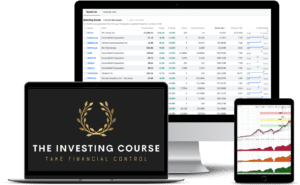Timing investments
From watchlist to investment

The following five tools are useful to help your time your investment:
(1) Technical Analysis, (2) Macroeconomics, (3) Long-term Trends & Narratives, (4) Making a Timeline, and (5) Checklist
Finding good, cheap, companies aren’t always enough to make great investments
Once you have a watch list of attractively valued long-term investments based on quality forecasts made with a thorough understanding of the business model and competitive environment, and you are ready to invest in one of them, you should consider whether it’s a better than average time to invest or if you should wait for a better opportunity (with lower price or less uncertainty).
The ultimate timing tools
1 Technical Analysis tools aim to measure the current eagerness of buyers and sellers. The 200-day moving average and Bollinger bands are commonly used indicators. They are the simplest and most intuitive TA tools, and the ones I recommend. They should however still only be used as marginal inputs for better investment timing and not as decisive investment factors.
2 Macro: Usually, one can (and most often should) safely ignore macroeconomic data. Sometimes however, factors such as the overall market valuation, interest rate trends, or PMI data might matter enough to take into consideration if they are really extreme relative to their normal ranges. Hedgeye’s four ‘quads’, Hussman’s valuation charts, and Howard Marks’ cycle assessments are effective shortcuts to outlining the state of the macro environment instead of doing all the tedious work oneself based on FRED data..
3 Trends and narratives: Strong overarching movements like globalization, Internet, and Artificial Intelligence can have significant and quite long term effects on both fundamentals (growth) and valuation (sentiment). You should expect and accept paying more, or wait for higher valuations than average to sell at, in those circumstances.
4 Making a Timeline of scheduled and possible future events and their likely importance for the stock price, reduces the frequency of jarring surprises and unfortunate timing.
5 Checklist: don’t invest if you for example feel FOMO, or if you don’t understand how the company creates value and the investment thus might be a kind of Ponzi scheme. Practice pitching your idea clearly and concisely – if you can’t do that you shouldn’t risk any money on the idea.
* * *
In addition to these five tools, you will also need to be patient to wait until the timing is right. That is actually a very common situation, that you have found a great stock but it’s currently too expensive, so you have to wait for a good entry point.
In Week 4 of The Investing Course we go into detail how to use these tools in combination to appropriately time your stock investment.
You May Also Like These Articles:








